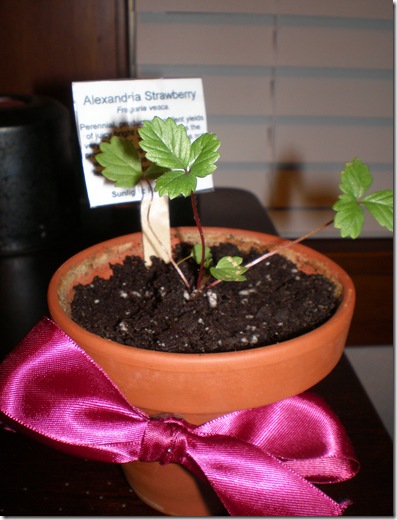There are hundreds of fun and fabulous seed starting products out there, but you don't
have to spend all that money. If you can at least invest in a bag of Seed Starting Medium or very lightweight potting soil, that alone will get you off to a great start.
Cheaper Than Peat Pellets/Pods:Those seed starting pods or pellets, the kind that come looking like little disks then expand in water to look like a huge brown marshmallow, are admittedly handy. However, you can imitate these will little effort and money:
1. Save the tubes from inside your toilet paper rolls.
2. Cut a tube in half, resulting in two shorter tubes.
 (Note that this is optional. You could use the entire tube if you feel like the plants you're growing need more room for their roots to stretch out before they are transplanted or moved to a larger container.)
(Note that this is optional. You could use the entire tube if you feel like the plants you're growing need more room for their roots to stretch out before they are transplanted or moved to a larger container.)
3. Take one of those half-tubes and decide which end will be the "bottom" of your peat pod. Make a few cuts in the bottom of the tube so that you will be able to fold it in on itself.

3. Fold in the bottom of the half-tube, making sure the bottom of it is mostly closed. Repeat until you have as many folded half-tubes as needed.


4. Place these tubes in a water-proof tray of some sort.

5. Fill each with seed starting medium or a lightweight potting soil.


6. Plant seeds as directed.
7. Water these by pouring water into the
tray, not by pouring it directly onto the soil.
8. My general rule of thumb is to transplant these, tube and all, into a newspaper/Jiffy pot with potting soil soon after they develop their first set of "true leaves."
Cheaper Than Those Biodegradable Jiffy Pots: Jiffy pots are also very convenient, but there's a nearly free alternative to these as well. You'll need to make sure you have a tray or tub with sides as high as the pots will be tall, but you can make newspaper pots, the creation of which
I illustrated last year.
Cheaper Than Fancy Trays: You can use damn near anything as a water-proof tray to hold your seedlings. I love using plastic food containers that used to hold things like bakery cookies. Plastic dish tubs from the dollar store are useful, especially when seedlings have been moved to larger newspaper or Jiffy pots. On the smaller scale, butter tubs (or a spreadable cheese tub, like I used in the pictures above) do well. Amazingly,
Skinny Cow ice cream sandwich containers fit the toilet paper tube "pods" (and actual peat pods)
perfectly, and they also fit right onto our windowsills. Just make sure that anything you use that once contained food has been cleaned out properly.
Cheaper than Grow Lights: Grow lights can help prevent leggy seedlings, but they're also pretty expensive. A cheaper option would be to hang an inexpensive shop light over your seedlings instead. Or, like me, you can simply grow your seedlings on south-facing windowsills and deal with the fact that they'll be a tad bit leggy. (Sunlight is FREE!)
Cheaper than Buying Plastic Seedling Cells: Some people buy the little
six-pack plastic cells when, just last year, they might have purchased flowers from the garden center in a nearly identical six-pack. Whenever I buy flowers (or other plants) in cells or small pots sturdy enough to still be in one piece after removal of the flowers, I rinse that sucker out and stash it away in my garage to use for flowers from seed the next year. (They also work for most veggies from seed, unless they have delicate roots.)
Cheaper than Any of That Other Stuff: This won't work with some seeds (read your packets!), but sometimes you
can wait until the appropriate time to direct-seed them into the garden. My favorite thing about this method, to be honest, has little to do with money... it's the fact that there's no hardening off to be done
at all. How convenient.
That's about all I can think of at the moment. Please post and share your ideas!


.jpg)

.jpg)

















